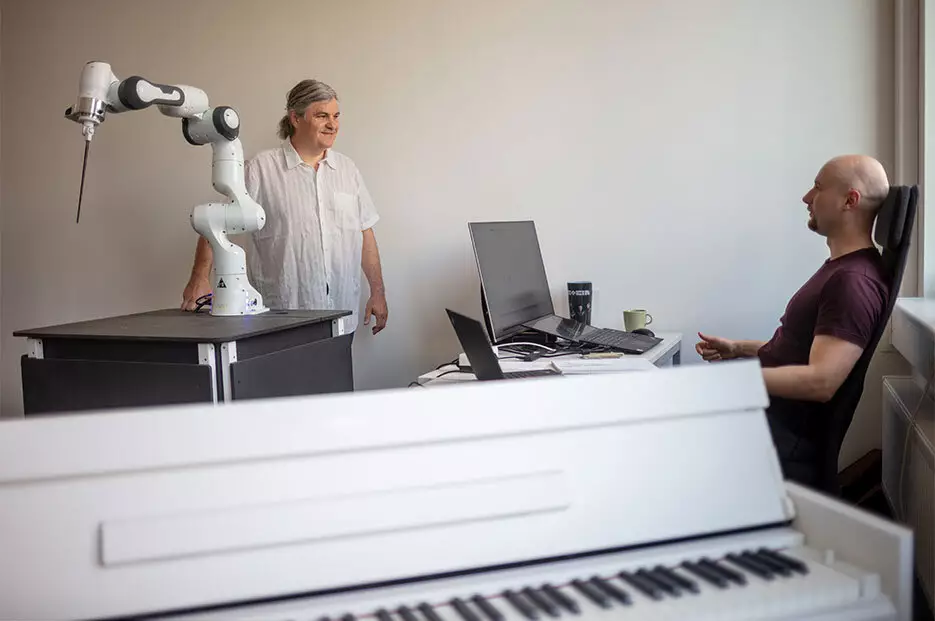In a fascinating blend of technology and artistry, a three-armed robot has stepped into the limelight as a conductor, showcasing its unique capabilities in Dresden, Germany. This innovative robotic entity is designed to mimic the movements of a human conductor, embodying the symbiotic relationship between humanity and machine. With its arms resembling the light sabers from the beloved “Star Wars” franchise, the robot has taken on the task of directing the musicians of the Dresdner Sinfoniker orchestra, presenting a novel approach to orchestral performance that calls into question traditional notions of musical direction.
The robot’s debut featured two remarkable performances, one of which highlighted a piece composed specifically to enhance the machine’s conducting abilities. “Semiconductor’s Masterpiece,” a work by composer Andreas Gundlach, showcased the robot’s sophisticated ability to establish tempo and control dynamics through the independent movement of its three arms. Unlike human conductors, who rely on a centralized physical presence to influence the orchestra, this robot could simultaneously direct different sections of the ensemble, achieving a level of precision and complexity that challenges the functionalities of human leadership in music.
The creation of this robot is not solely a product of technological advancement but also a testament to human creativity and collaboration. Gundlach collaborates with scientists from the Technical University of Dresden, who specialize in developing “cobots”—robots designed to work alongside humans, rather than replacing them. This collaborative approach to innovation has profound implications for the role of technology in art, as it suggests a future where humans and machines are co-creators, rather than competitors. The robot’s design and training process illustrated Gundlach’s reflection on the complexities of human artistry, as he remarked on the challenges of teaching a machine the subtleties of aesthetic movement.
The foray into robotic conducting presents a profound opportunity to expand the boundaries of orchestral music. Through pieces like “#kreuzknoten,” composed by Wieland Reissmann, the robot demonstrated its capacity to manage complex compositions where various instruments play in contrasting tempos. This ability not only highlights the potential of robotics in a live music setting but also poses compelling questions about the future of orchestral performance—will robots complement the existing artistry, or eventually redefine it?
As we venture deeper into an era where technology increasingly pervades all aspects of life, the introduction of robotic conductors could signal a transformative phase in the world of music. The implications for both musicians and composers are significant, hinting at a synergistic future where creativity is augmented by advanced technology. The debut of this three-armed robot offers a glimpse into what could be an exciting new chapter in orchestral music, inviting audiences to reimagine the relationship between the conductor, the orchestra, and the compositions that bind them.

